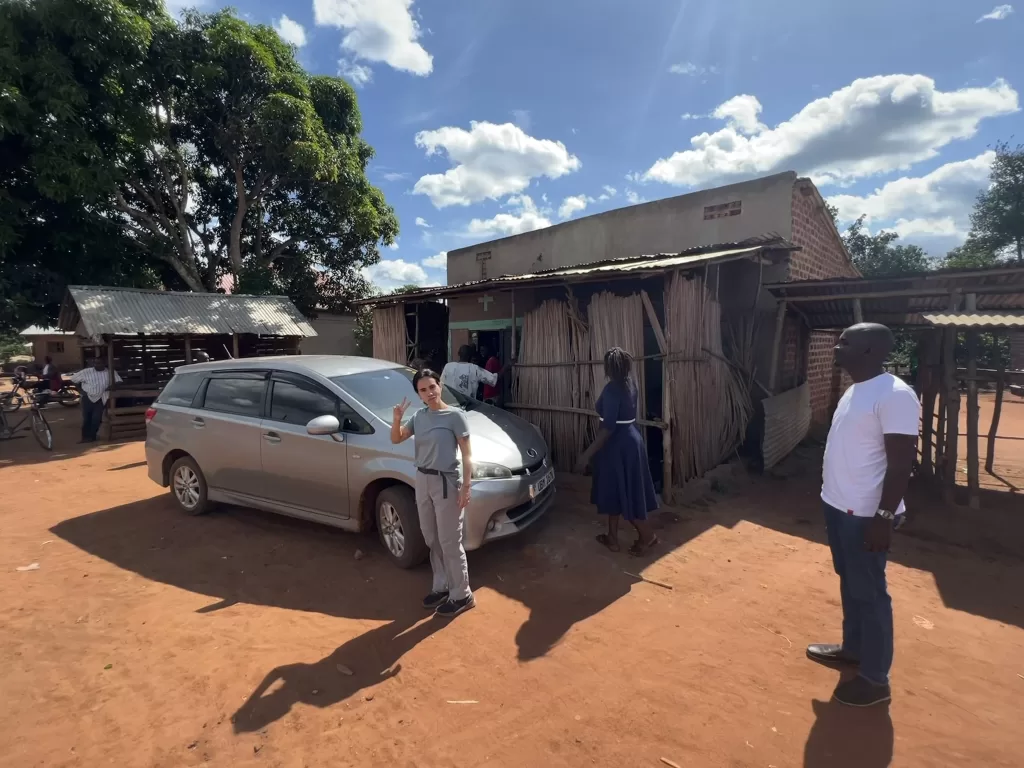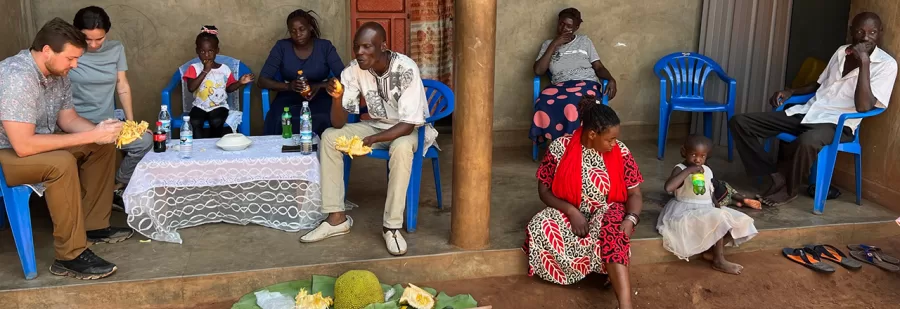Ugandan energy independence is growing rapidly as each day more Ugandans generate their own electricity.
Ugandan energy independence unlocks education
“These kids need an education.”
It was the most serious Ben had been all day. I was overcome by a wave of admiration for his passion and determination.
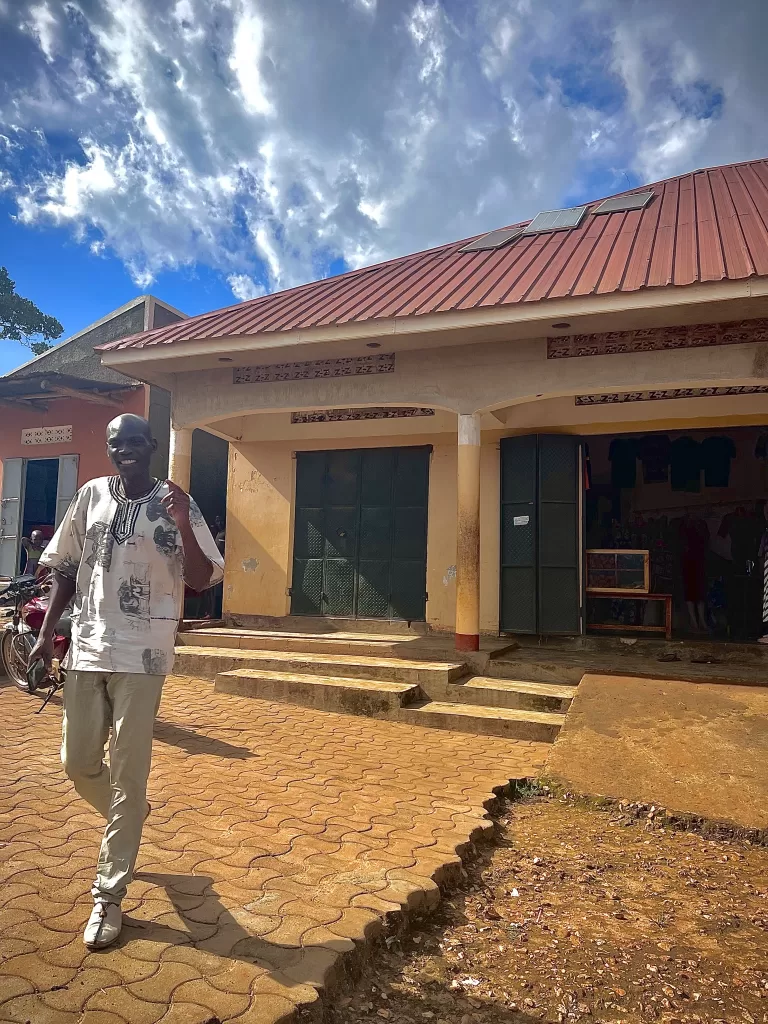
Ben and I met in 2007 when I first came to Kampala, Uganda. I spent a month in Uganda’s Mulago Hospital, photo-documenting the medical trials seeking to create more effective treatments for patients suffering from multi-drug resistant Tuberculosis. Ben was an archivist in the research center’s medical records.
We met during my first week there and quickly became friends. Ben would pick me up on a borrowed motorcycle each weekend, and we’d go on excursions around Kampala and the surrounding countryside. Since then, our friendship has continued through WhatsApp messages, photos, and videos.
On a few occasions, Ben has shared the struggles so many Ugandans face in finding employment and a steady income. It’s a real challenge, even for those who speak numerous languages and have graduated from prestigious universities. It’s a frustrating reality but not a surprise. The job market in Uganda has long struggled to keep pace with the demand from its hardworking, well-educated, talented, and young population.
Ben’s new venture
16 years later, I was with Ben again and in Uganda, this time to understand and document how solar microgrids were generating Ugandan energy independence and transforming lives.
In 2021, Ben decided to set up gaming centers with slot machines in off-grid towns outside Kampala to cover his children’s school fees. But before he could open them, he had a major roadblock hurdle – how to electrify the facilities without grid electricity.
He decided that a solar microgrid would work. We discussed the plan and arranged a no-interest loan to finance the solar microgrid purchases, which could then be repaid with the gaming centers’ earnings.
A couple of weeks ago, I finally had the chance to travel to Uganda and visit Ben. We spent a day together, introducing our families and visiting the gaming centers that are now generating a steady income.

It was inspiring to see 2 simple solar microgrids propel his 7 children’s growth and education. Ben is now constructing a 3rd larger facility with slot machines, pool tables, and a bar. His goal is to eventually run 10 centers in nearby towns.
Ben is a particularly resourceful and determined person, but businesses’ inability to access the electric grid is common in Uganda.
This begs the questions: How does electricity access impact Ugandan life? And, what’s being done to foster Ugandan energy independence?
The state of Ugandan energy
In the summer of 2019, while working out of SunPower’s office on the San Francisco Bay, our Green Team hosted a lunch & learn on Ugandan electrification. The guest host had founded a non-profit that financed Ugandan entrepreneurs electrifying their communities with renewable microgrids. Her presentation struck a chord.
I’d spent the past 5 years deploying solar microgrids in the US to make our electricity cleaner, lower cost, and more reliable. Now I was seeing how solar microgrids could do the same in another country I love, Uganda.
Uganda’s location on the equator makes it a bountiful solar country, drawing many solar microgrid providers to electrify the country.
Ugandans’ energy use
In 2007, I stepped off the plane in Entebbe, Uganda, and was struck by the smell. Air perfumed from the earthy sweetness of wet red clay soil beneath my feet mixed with the acrid smoke wafting by.
Millions of Ugandans burn wood, kerosene, and charcoal each day to illuminate homes and cook dinners.
In the 1980s, biomass, primarily wood and charcoal, provided 95% of Uganda’s energy.
In 2002, 8% of households had electric lighting.
Today, less than 20% of Ugandans can access the national electric grid, and nearly 3 in 5 Ugandans don’t have electricity at home.
Ugandans use 215kWh of electricity per capita annually, enough to power a 200W fridge-freezer for about a month. That’s half as much as their Sub-Saharan neighbors.
The government’s goal is 100% electrification by 2030, which means another 30 million Ugandans must be electrified in less than a decade.
The state of the Ugandan energy grid
Formed in 2004, Umeme, the government-owned utility company, distributes 97% of the country’s grid electricity. Each month, 1,000 new homes and businesses connect to its grid. Unfortunately, that’s only a fraction of the interconnections needed to electrify a large percentage of the population. Rural and remote areas wait an especially long time for the grid to reach them, as the infrastructure costs are higher than in major cities. Those lucky enough to have grid electricity still deal with frequent power outages.
Umeme blackouts have often lasted weeks to months. In 2006, Lake Victoria’s water levels dropped abruptly, reducing the amount of hydro-generated electricity available, creating an energy crisis and rolling blackouts across the country.
Prolonged blackouts often lead to disruption and unrest. A demonstration over power outages in the town of Gulu resulted in a protestor being shot in the butt in front of the Umeme office.
A few weeks ago, I sat in a dark restaurant as staff scrambled to keep customers in their seats during a surprise power outage. And almost every hospital and sophisticated facility I passed has massive backup diesel generators to ensure that the lights stay on.

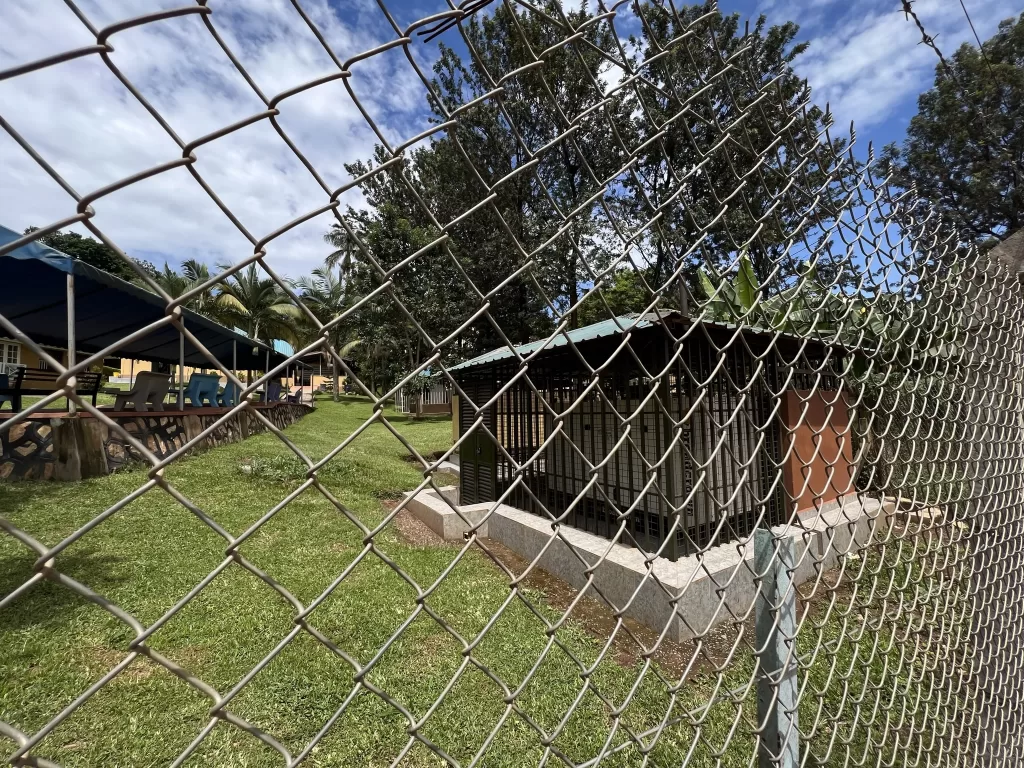
Ugandan clean energy generation
Uganda has been an excellent steward of the natural world. Its numerous national parks protect vast spans of land and diverse habitats, and renewable resources provide almost all of the grid’s electricity.
Ugandan energy’s greenhouse gas emissions are 1.39 tons of carbon dioxide per person. One of the lowest in the world. Sure, that’s in part due to the undesirable state of many Ugandans not having electricity. Still, the sources that supply on—and off-grid electricity play significant and positive roles. Nearly 85% of the country’s electricity comes from hydro and solar.
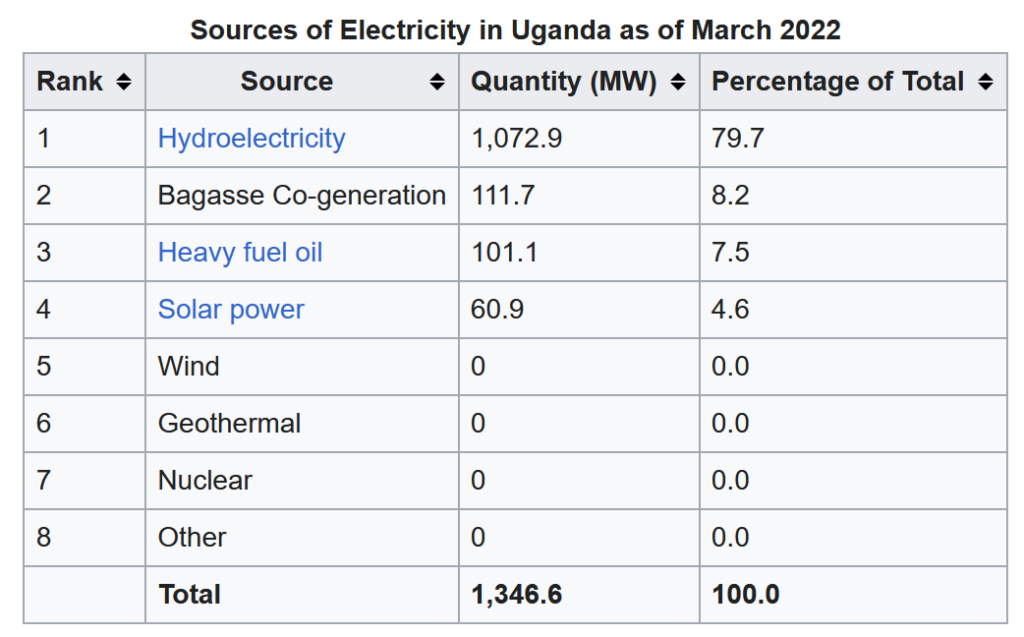
What’s driving Ugandan energy independence
Electricity access empowers the people and communities it reaches. It’s even more empowering when they control the electricity generation and distribution. That’s why so many people across the globe now use renewable microgrids to store energy and produce electricity. By creating local energy independence, they’re leapfrogging the governments and utility companies who control centralized grids’ reach and access points.
Today, Ugandans are using solar panels and solar microgrids to access electricity, improve safety, avoid power outages, and lower energy bills.

Evolving energy sources
Uganda uses less electricity than most of the world and its neighbors. Biomass and biofuels, like charcoal, wood, and kerosene, are the country’s most commonly used energy sources.
Burning biomass and biofuels for power has many downsides…
The smoke damages the eyes, lungs, and hearts.
Accessing the energy leads to deforestation, landslides, and pollution.
Transporting and purchasing the fuel has high opportunity and financial costs.
The low light they produce makes studying and reading at night challenging.
No electricity is produced, so electronics can’t be powered.
When reliable electricity is secured, health outcomes improve, equity spreads, and new opportunities arise. Electricity powers life-changing health care, social engagement, information dissemination, entrepreneurial endeavors, and employment.
Leapfrogging into power
The desire for electricity is driving Ugandans to buy, sell, and build solar systems and solar microgrids, leapfrogging them into electrified homes and communities. For decades, Ugandans acquired their own tools and technology to leapfrog over obsolete and prohibitively bureaucratic infrastructure systems
It started with cell phones. Most Ugandans went from having no phone to a cell phone…bypassing the phone lines that never reached them.
Today, it’s happening with electricity access. Many people will go from no in-home grid connection to electrifying their houses with solar panels they own. This evolution in personal energy independence accelerates as individuals see their family and neighbors successfully leapfrog and with the continued improvement of available solar technology and financing.
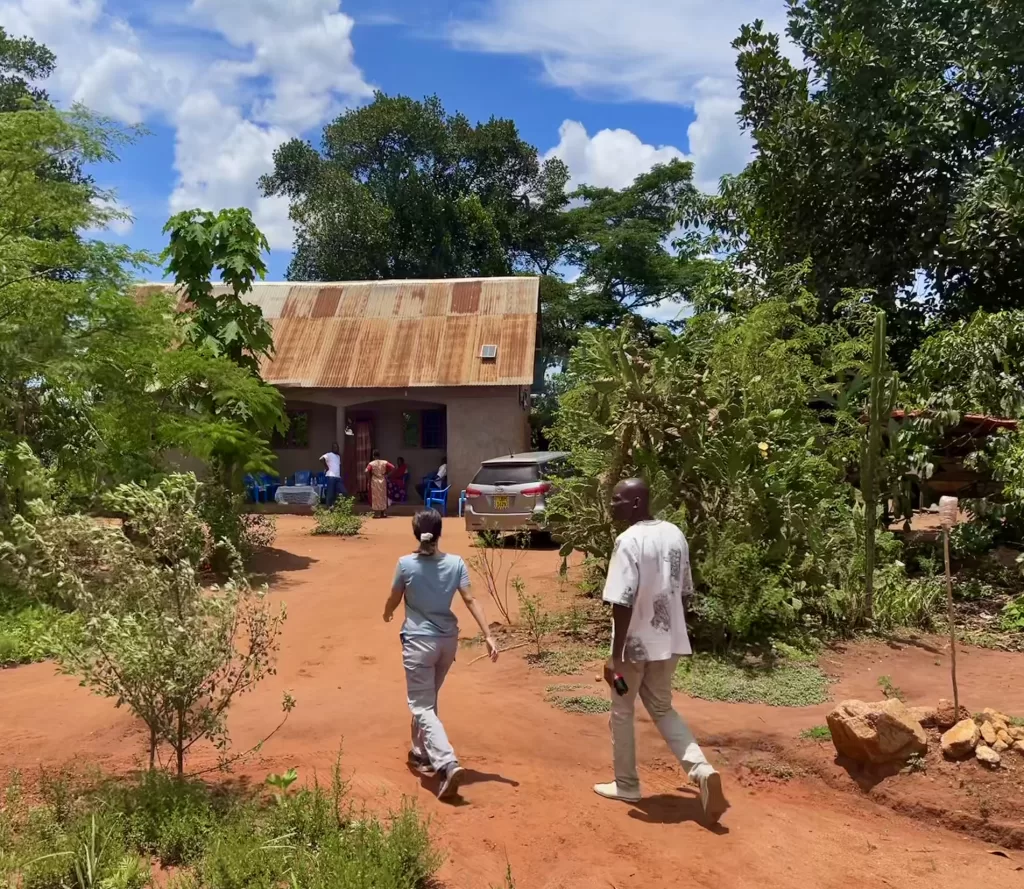
Protecting women and children
Tragically, many women in Uganda are sexually assaulted while traveling to collect water or firewood. The rate of sexual assault in Uganda is high, especially in refugee camps.
Lights powered by solar panels have proved effective in reducing these attacks. Portable electric lanterns charged by solar panels illuminate walks in the bush. Many rural communities and refugee camps now have solar-powered streetlights that shine on small roads and walkways. Homes that used to be shrouded in darkness at night now have solar microgrid-powered lights and cell phones.
Solar microgrids also support people already affected by sexual assault. Uganda’s Rape Hurts Foundation provides a haven for the area’s homeless children—many conceived through rape. They’ve partnered with the Solar Electric Light Fund to build solar streetlights and a water pump in the center of town, as well as solar stoves and a 6kW solar microgrid for the foundation’s facility.
These simple tools greatly improve community safety, particularly for women and children.
Economic opportunity
Ugandan society is still working to develop an economy that broadly generates the desired entrepreneurial and professional opportunities. Over 70% of working-age Ugandans are unemployed.
Reliable electricity and roads are pillars for any country to build a robust economy and job market. The government is certainly capable of executing the needed infrastructure – Uganda’s wireless internet network is excellent. Yet advancements in energy and transportation networks have been slow.
Traditionally, businesses have needed to rely on diesel generators to ensure the lights stay on. This comes at a high operating cost—the fuel and repairs are expensive. Creating an unnecessary financial strain on the industry and slowing Uganda’s overall economic growth. Buying diesel is beyond their means for some businesses, so the grid’s reliability limits dictate their operating hours and potential earnings.
To address these challenges, the government is investing in expanding Umeme’s coverage territory, mandating that the Ministry of Energy and Minerals work with the private sector to develop microgrids.
However, many business owners and real estate developers have decided to pursue electrification independently by powering their facilities with solar panels and private microgrids, such as Akright, a housing development outside of Kampala. By securing their electrification, these businesses ensure uninterrupted operations, attract more customers, hire more people, and grow Uganda’s economy.
Lowering energy bills
All of our bio and fossil fuels get their energy from the sun. When we go directly to the source, using solar panels to our lives with solar rays, we’re able to power our lives more efficiently and cost-effectively.
That’s why many Ugandans are trading in gas and diesel generators for solar panels and solar microgrids. Across Uganda, bill-crunchers and money-makers use the sun’s rays to lower the costs of electrifying their homes and businesses.
Yet, the cost of solar panels still prevents many Ugandan households from accessing the overall savings that they unlock.
My wife and I spent a few days driving around Uganda’s capital, Kampala, with Phillip Kabaikaramu, the founder of the travel company Neza Expeditions. Phillip is in his late 20s and a cosmopolitan member of the growing professional class. He only knows a few people who have solar systems powering their homes in Kampala.
Buying a solar system to power a whole home is prohibitively expensive for many middle-class families. Even though a solar system pays for itself over the years and ultimately can save lots of money over its lifetime, he told us that the upfront investment prevented most people he knows from being able to afford enough panels to provide the power they desire for their home.
Clean energy technologies, like solar panels, become cheaper every year. With time, larger solar systems will be accessible to a broader spectrum of Ugandans. More accessible credit for solar systems financing and solar panels with longer warranties will increase the rate of Ugandan energy independence and its associated benefits. In the meantime, many Ugandans will continue using panels to offset energy from other sources where there’s a quick return on investment.
How to choose a renewable microgrid in Uganda
When choosing a renewable microgrid, we need to first ask ourselves: What will we use it for? And what type will work best in my location?
In Uganda, the 2nd question is easy to answer.
Solar panels are the most affordable, accessible, and effective way to power a renewable microgrid in most parts of Uganda.
Why?
- Uganda’s equatorial position provides abundant sunshine for consistent daylight hours year-round, providing a solar energy potential of 5.1 kWh/m².
- The price of solar panels has consistently fallen for the past decade. Making the technology abundantly available and increasingly affordable for a wide range of uses.
- Solar panels are already a widely known and accepted technology – they power homes, businesses, facilities, and electronics across the country.
To help answer the 1st question, look at how Ugandans use solar microgrids today.
Who’s using solar microgrids in Uganda?
A Ugandan entrepreneur
Crammy Wanyama, the founder of Avian Safaris, is a serial entrepreneur who has grown multiple businesses and is one of Uganda’s most knowledgeable birders.
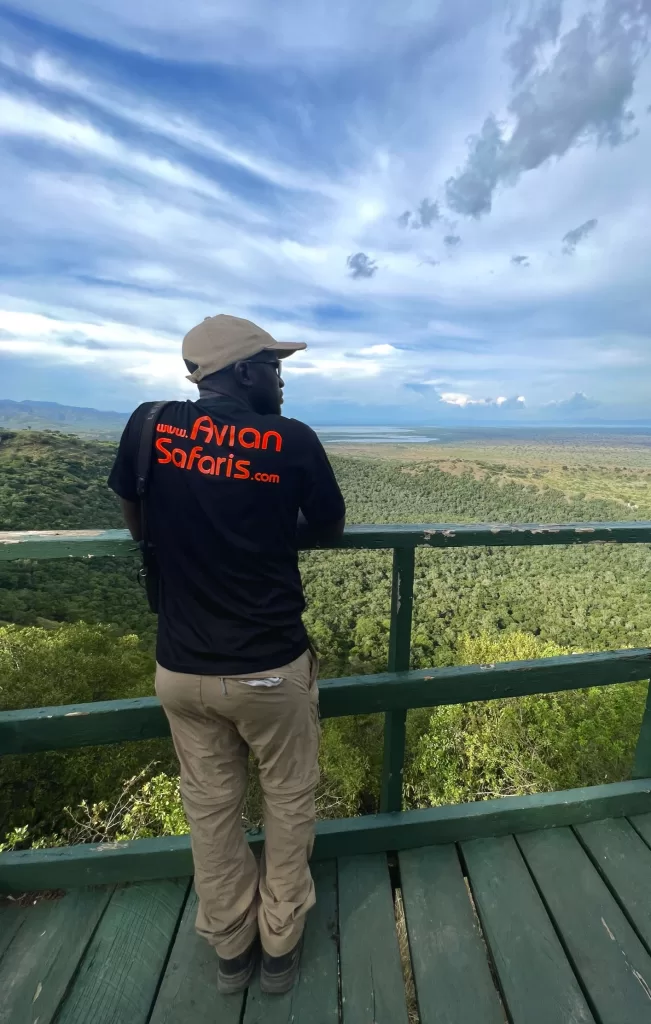
No matter how well their businesses were run, when COVID hit, bookings evaporated for everyone in the tourism industry. So, in 2021, Crammy decided to start a chicken farm to create jobs and provide a new revenue source while Avian Safaris’ tours were on pause. He opted to install solar panels to electrify the farm’s lights and keep energy costs low.
Today, Avian Safaris again has a steady flow of tours, the chicken farm continues operations, and Crammy is looking to purchase more powerful and durable solar panels to help grow his chicken business.
Modest Ugandan households
Another Wanyama, Jumia Wanyama, has sold solar systems for the past 5 years.
After leaving Mburo Lake National Park, I stopped by his MySol shop in Mbarara. Jumia offers 50-200W solar panels with attached battery packs.
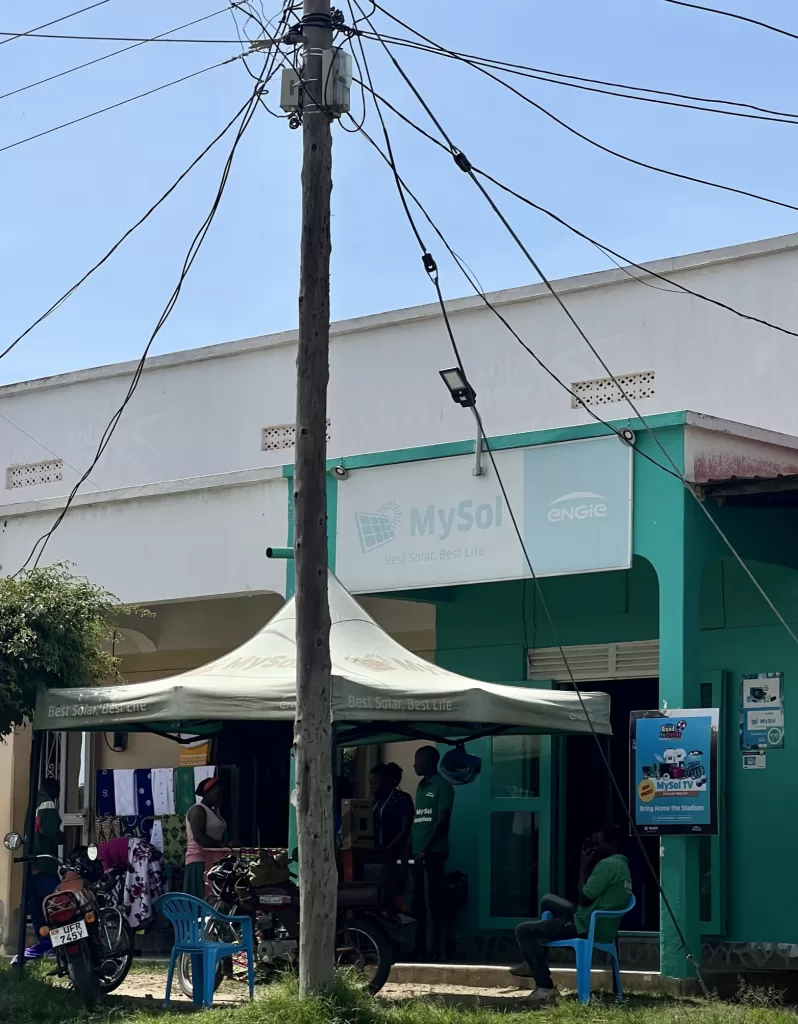
He told me that most solar microgrid purchasers in Mbarara are individuals who start with small solar microgrids that can power a TV or charge a laptop at their homes. Jumia offers his customers pay-as-you-go plans, providing them with enhanced energy independence for a small up-front cost. As his customers pay off the microgrid, they can incrementally increase the solar system’s size and electricity generation to power more and larger electronics.
A caring Ugandan father
Ben Male, whom we met at the beginning, is the first Ugandan I knew with solar microgrids.
His solar microgrids each have a couple of solar panels that provide several hundred watts of power and store additional energy in lead-acid batteries. They power all of his gaming centers and enabled Ben to open these businesses in off-grid communities while avoiding recurring energy bills.
The power from these solar microgrids has paid for his 5 children’s schooling and are creating new opportunities for his family.
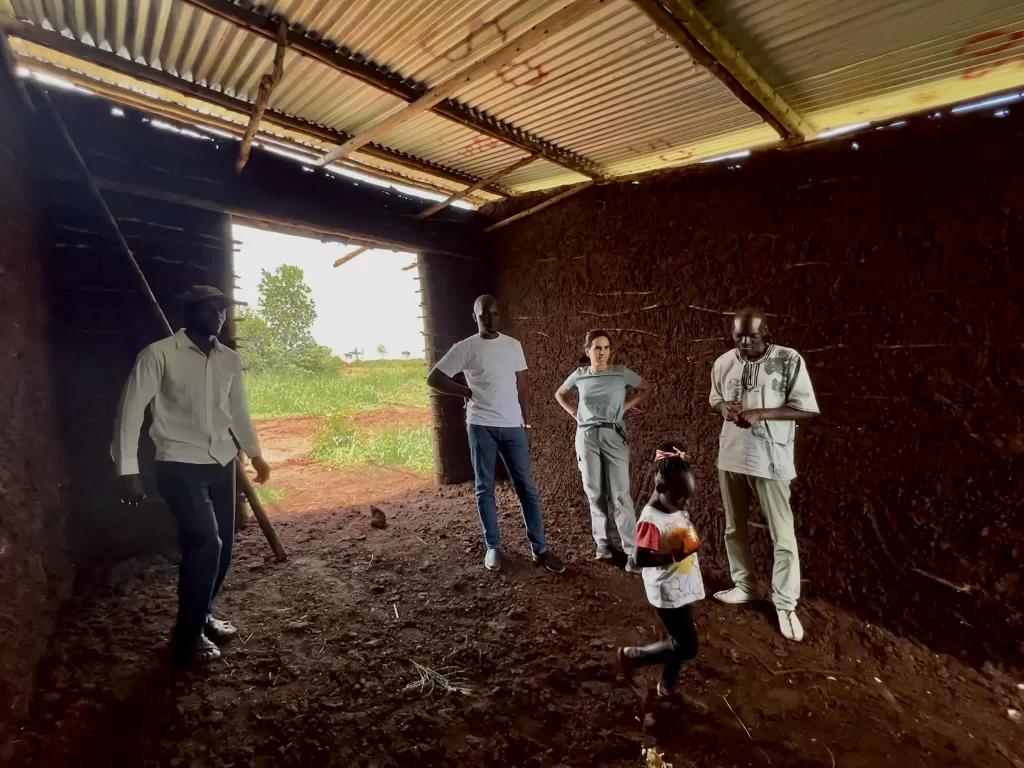
Where are Ugandans using solar power?
Not even in California, the center of solar energy use in the US, are so many structures powered by solar panels. In every city and town that we passed through, there were advertisements for solar microgrid components everywhere, and at least a couple of stores selling solar panels and batteries.
In Uganda, you find solar microgrids almost everywhere.
Cities
In Kampala and Jinja (Uganda’s action-sports capital), streetlights are powered by solar microgrids. The panels absorb sunlight and store it in batteries or send it to the grid to illuminate the lights in the evening.
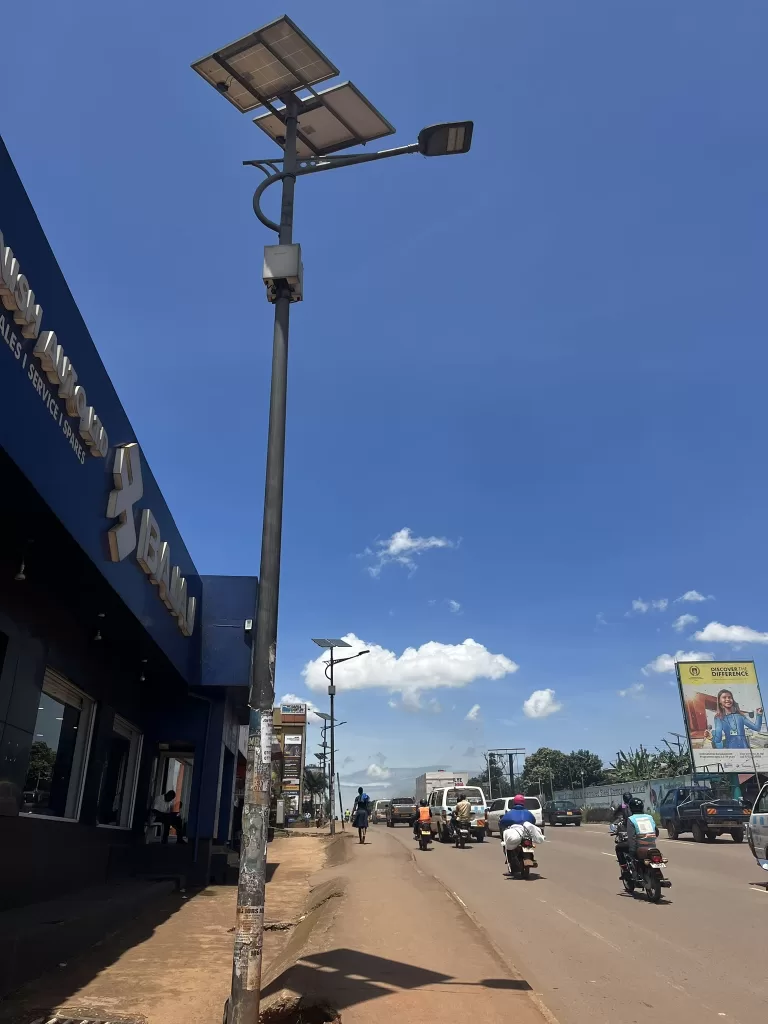
In Entebbe, where Uganda’s international airport and a United Nations base are located, the hotels lining the shores of Lake Victoria also illuminate their paths and outdoor spaces with solar-powered lights.

Of all the cities in Uganda, Kampala likely has the most people with electrified homes, and still, many residents live in simple unelectrified mud brick or corrugated aluminum dwellings. Yet, almost everyone has a cell phone. These two realities create a money-making opportunity for people with solar microgrids. In Kampala neighborhoods, it’s common to find businesses selling prepaid cellular minutes and offering cell phone charging from a solar microgrid.

Towns and villages
While driving back into Kampala, we passed a business selling biodigesters. Biodigesters use animal or human waste to create fertilizer or biogas. With the proper generator, biogas can be burnt and converted into electricity.

Ben’s solar microgrids are in the towns of Nakabululu and Kiwangulu on the outskirts of Kampala. The 3rd is planned for the more remote Wabusaana.

On excursions with Ben, Philip, and Crammy, we encountered solar systems and solar microgrids powered structures in every town and village.
In the town of Masaka, almost every one of its steep-roofed homes had at least 1. Crammy shared that the roof design isn’t for aesthetics. The steep pitches prevent thieves from easily stealing solar panels.
Kidepo Valley is an arid region with many grass-thatched roofs near Uganda’s northern border with South Sudan. After traveling there, my father excitedly wrote of the off-grid homes that now donned solar panels. More impressively, on a sunny day, he’d spotted a young man walking down a trail powering his devices from the solar panel balanced on his head.

National parks
Upon entering each Ugandan national park, you check in with a ranger whose station and living quarters are often solar microgrid powered.


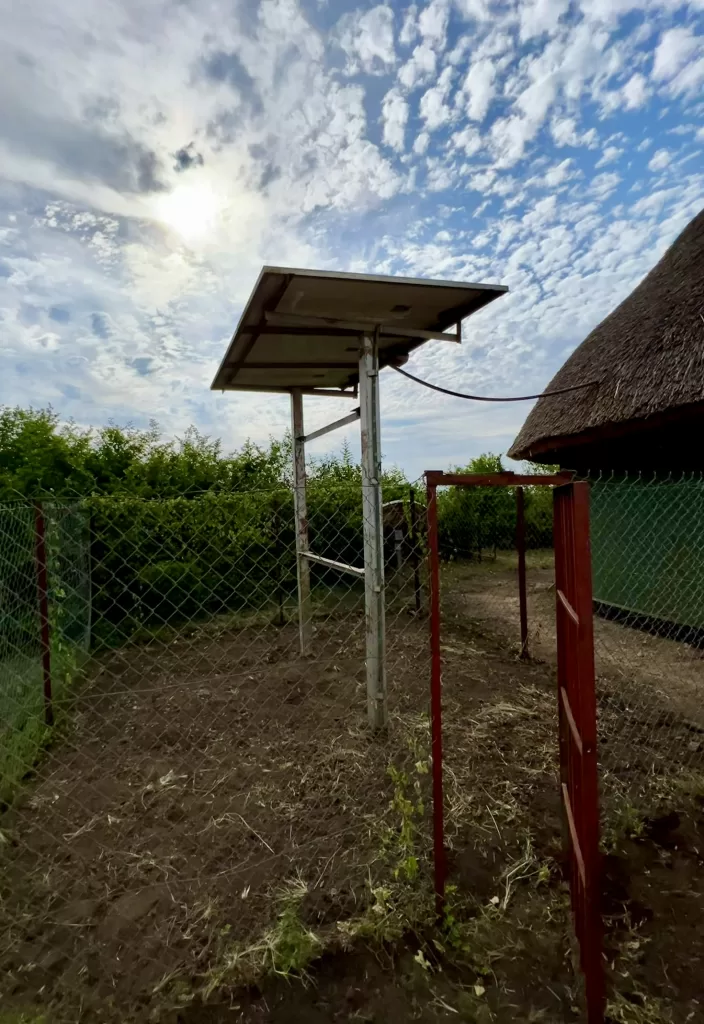
Refugee camps
Every country and culture in the world excels in certain ways. One of Uganda’s great strengths is the willingness to accept refugees and give them the opportunity to be productive members of society.
Over the past few decades, conflicts in the Democratic Republic of Congo, Rwanda, Sudan, South Sudan, and Somalia have created a refugee crisis in the region. Uganda has accepted 1.5M refugees – more than almost every country on earth. The Refugee Act of 2006 provides refugees in Uganda the freedom of movement, the right to work, and land for settlements.
However, this has led to massive refugee settlements lacking electricity access. Solar microgrids help provide refugees in Uganda with electricity.
BidiBidi
BidiBidi is the 2nd largest refugee camp in the world, with over 270,000 residents. Many of them are Sudanese who fled the civil war and Ugandans forced from their communities by The Lord’s Resistance Army’s rebel group. Aga Great Work Limited has built a community-scale solar microgrid to provide electricity to BidiBidi residents.
Rwamwanja
Rwamwanja is home to over 50,000 refugees, mainly from the Democratic Republic of Congo. Here, residents can access remote-controlled solar-powered microgrids with no upfront cost and receive a 10% discount on standard pricing.
Providers of energy-independence products in Uganda
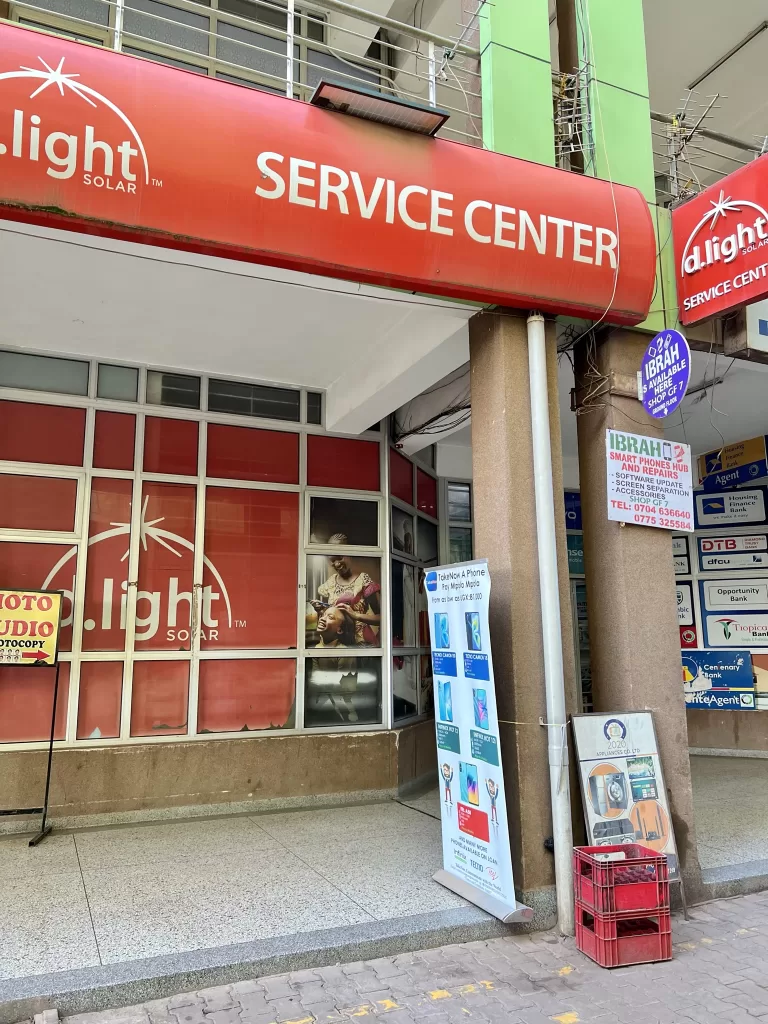
The companies below sell clean energy technologies and services in Uganda. Almost the entire county has access to at least one of these providers. Contact them if you’re interested in becoming more energy-independent with your own solar system, battery, or solar microgrid.
- D.light
- Mkopa
- Sun King
- Village Power
- Fenix International
- Power Trust Africa
- Aptech
- UltraTec
- Solar Today
- Solar Energy for Africa
- Solar Now
- Bright Lite
- Village Energy
- Chloride Exide
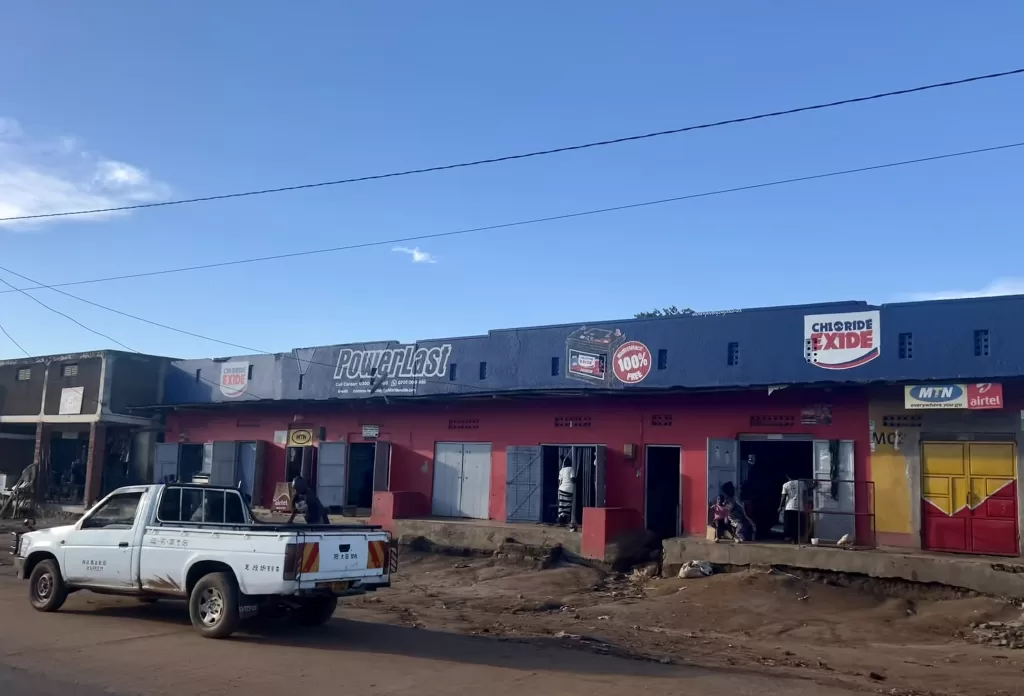
There are organizations operating in Uganda that give away solar systems, but if you’re able, it’s better to purchase clean energy technologies and services from a business that operates locally and provides affordable and high-quality products. As the purchaser of these products, you have broader opportunities warranty, maintenance, and replacement services. At a macro level, it’s a sustainable way for Ugandans to grow the job market, economy, and energy-independence access.
The range of solar microgrids companies operating in Uganda, many of which are founded by Ugandans, is inspiring. It shows that clean electricity and energy independence present a strong business opportunity in Uganda and are increasingly accessible.
Bringing home Ugandan energy independence
Over 1 billion of us don’t have electricity. That’s 1 in 8 of our global neighbors.
Renewable microgrids now enable us to choose when we want to produce our own electricity. Many Ugandans are taking matters into their own hands by choosing solar microgrids to generate the power they desire. It’s changing lives and fortunes.
We can increase the pace of this evolution by making higher quality solar panels, longer-term warranties on solar microgrid technologies, and credit more accessible in Uganda. As Crammy said to me, Ugandans don’t want to waste money on junk, but they’ll spend it on quality products and services.
Shoot a message to electricislandsblog@gmail.com if you’re interested in being involved in Uganda’s energy independence or have a story to tell.
To learn more about energy independence in your community and around the globe, subscribe to the Electric Islands mailing list.
Clean electricity for all.
Much love,
Alexander Boom
TRAVEL TIPS: Where to book Ugandan tours and safaris
Are you interested in going on wilderness adventures or cultural expeditions in Uganda and East Africa? Contact Avian Safari and Neza Expeditions to plan an amazing trip that will be led by excellent guides:
Avian Safaris
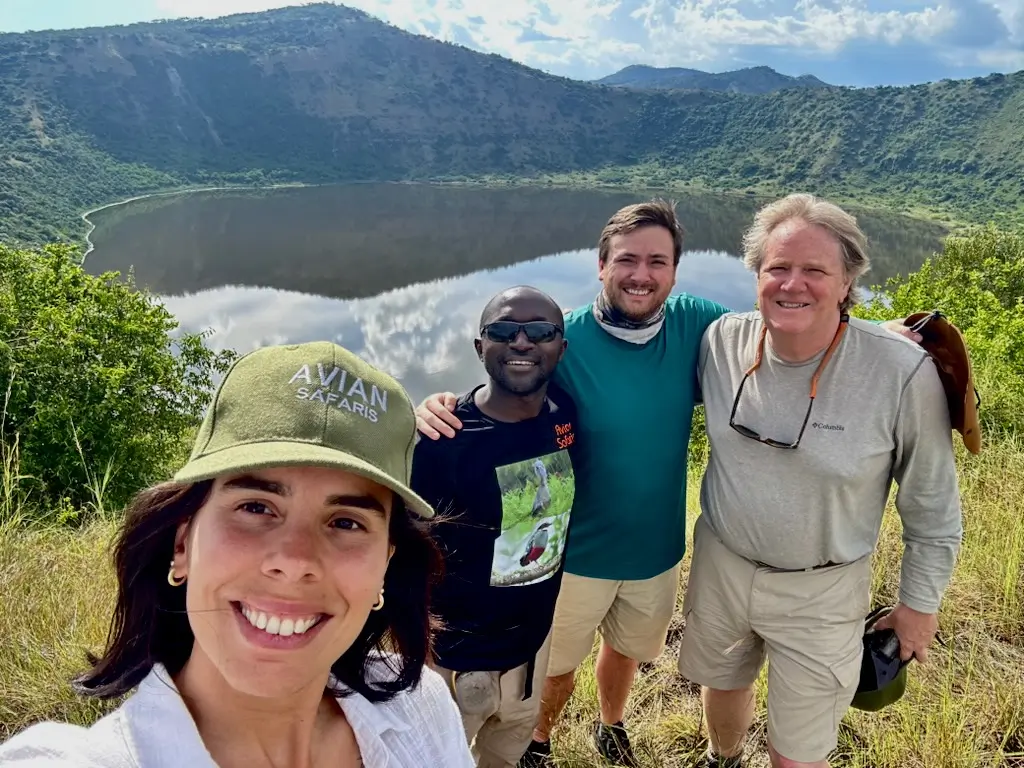
- Owner: Crammy Wanyama
- Phone #: +256 782 475 961
- Email: info@aviansafaris.com
Avian Safaris provides exceptional private tours throughout Uganda and neighboring countries. I recently spent 10 days traveling with my wife, dad, and Crammy through 4 of Uganda’s spectacular national parks. My dad is an avid Birder who’s been working in Uganda for 25 years – for the past 10 years, he’s solely traveled with Avian Safaris for East African adventures.


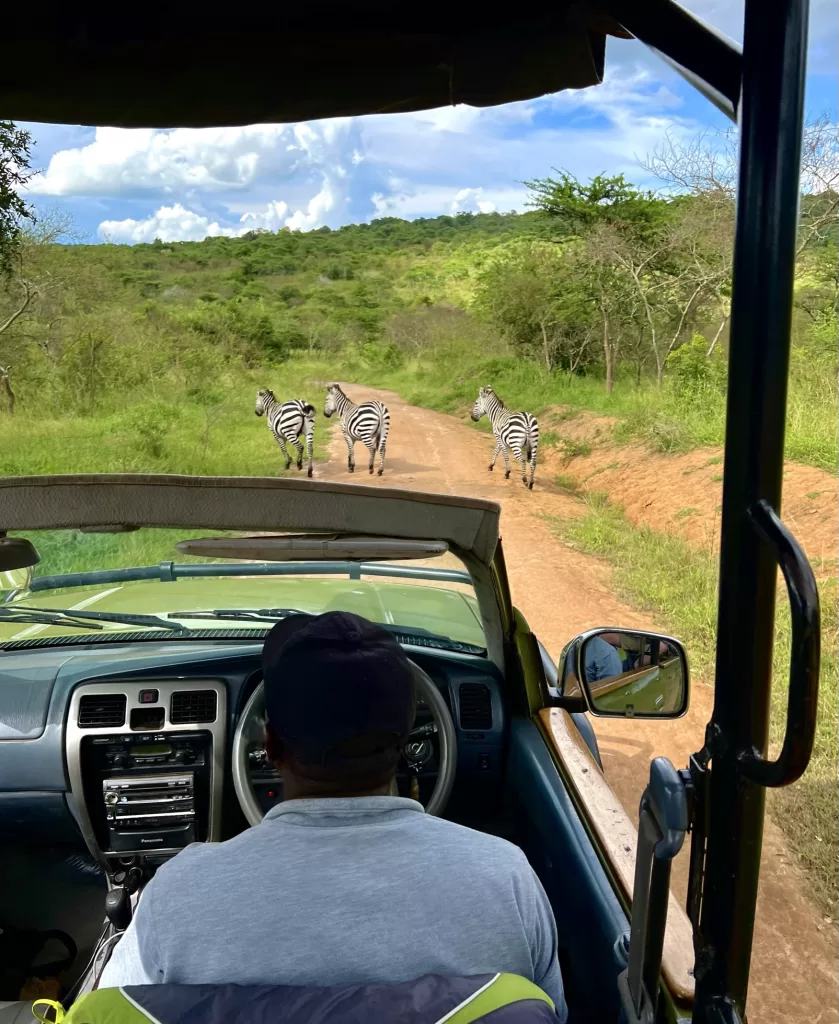
Avian Safaris provides private tours guided by a select few of Uganda’s most knowledgeable and accomplished birders. In addition to seeing remarkable birds, you’ll experience an array of East Africa’s cultures, national parks, and wildlife.
Neza Expeditions
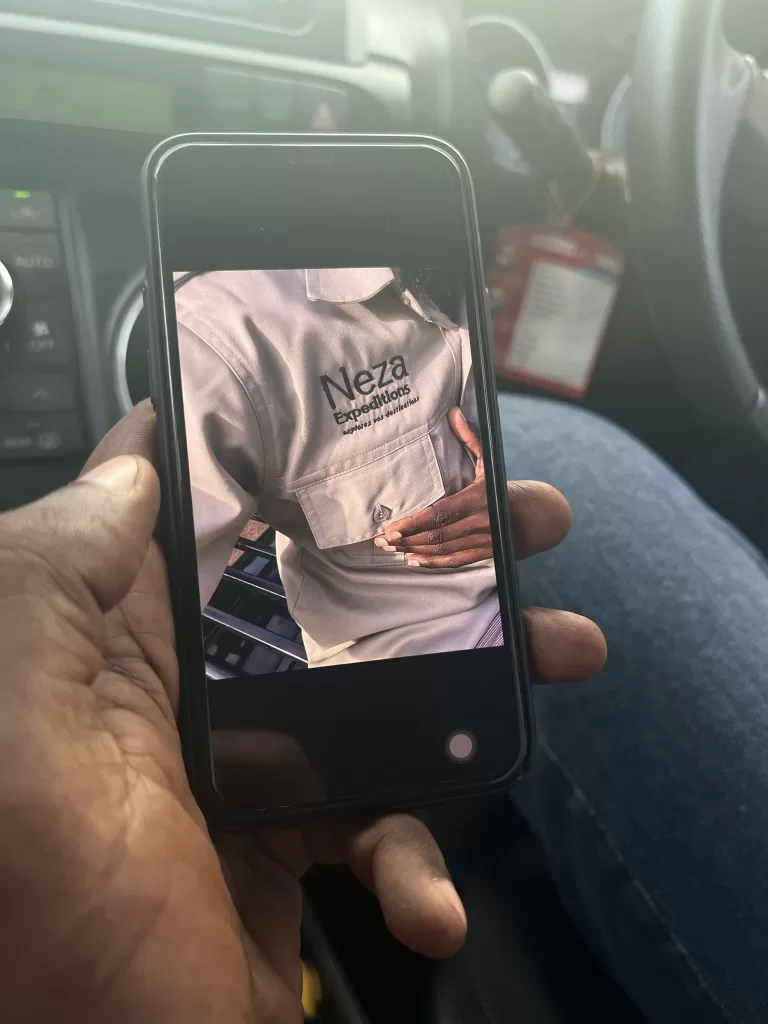
- Owner: Phillip Kabaikaramu
- Phone #: +256 700 546064
- Email: info@nezaexhibition.com
Neza Expeditions founder Philip Kabaikaramu drove us around while we stayed in Kampala. Philip is an excellent driver who’s lots of fun to spend time with and provides insightful perspectives into the places you visit.
In addition to providing rides and expeditions around Kampala and Entebbe, Neza Expeditions offer a range of travel itineraries to Ugandan national parks.
